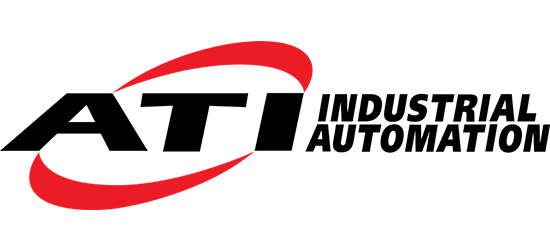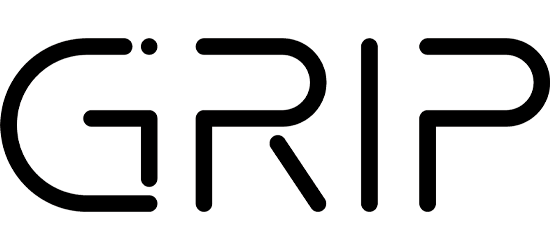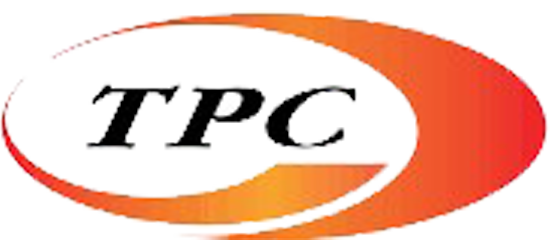[17-11-2021] Back Quick change of place
176 flat suction cups lift the chips simultaneously out of the Jedec tray
erler gmbh automation . robotik has developed a robotic cell for the automated handling of small semiconductor components for Schweizer Electronic AG. In this cell, a Stäubli Scara robot transfers up to 31,000 chips per hour from a standard tray to a special holder for the subsequent etching bath. This is made possible by 176 flat suction pads from Schmalz.
Instead of a personal handshake, Jochen Erler waves at the camera. Together with Holger Erler and Michael Müller, he manages the business of erler gmbh automation . robotik. Andreas Ehm is also present at the online meeting; together with Jochen Erler, he is responsible for the project that will be the focus of the conversation in a moment.
What the Swabian family-owned company from Dormettingen in the Zollernalb district deals with is revealed by the addition of ''automation - robotics'' to the company logo. ''In the meantime, we have put well over 200 robot controllers into operation and, with our automation and robot systems, we contribute to securing the locations of many companies here in Baden-Württemberg,'' explains Jochen Erler. In the beginning, it was all about PLC programming: In 1995, the company for PLC technology was founded by Alois Erler. Over the years, he developed the company into a full-service provider for control technology. As early as 1998, he focused on the subject of robotics: programming a Stäubli robot at the same time laid the foundation for many years of trusting cooperation as a Stäubli partner. Today, erler gmbh automation . robotik employs 47 people, spread across the areas of process engineering, factory automation and machine technology. ''We handle a large number of projects - from smaller services to retrofits to complete automation systems,'' Jochen Erler elaborates. Personal contact and proximity to the users are always important to him.
For more efficient printed circuit boards
Schweizer Electronic AG fits this picture. The PCB manufacturer has its headquarters just 40 kilometres from Dormettingen. He was looking for a reliable partner to develop an automation solution for moving small electronic components that are part of his (smart) p² Pack technology. The challenge here is that the individual elements measure only one square centimetre. These sensitive chips in copper inlays are later embedded in a printed circuit board. The so-called PCB embedding is a novel approach to further increase the efficiency and reaction speed of electric drives and assistance systems. This is because the PCB, as the control centre, is often the limiting element here. By integrating the power semiconductors into the PCB, Schweizer Electronic AG reduces the thermal and electrical resistance and thus enables the switching of higher powers.
''However, this project is neither about chip production nor about the actual integration. Before embedding, the copper surface must be roughened in the etching bath. Our system places the chips in a special device that later immerses them completely in the treatment bath,'' explains Andreas Ehm. The chips arrive in standardized Jedec trays: These are robust plastic trays with 176 defined recesses. ''If Schweizer Electronic AG were to immerse this tray in the etching bath, the components would sponge on top. Therefore, they designed their own tray,'' explains the project manager. The SE trays (SCHWEIZER Trays) have four nests of 176 cavities each for the semiconductor components. A lid closes them and keeps the chips in place during immersion.
Precisely placed
''Our solution for relocation consists of a robotic cell to which the trays are delivered manually in a transport cart. A servo axis system moves the individual trays into the cell. Here, the robot simultaneously picks up all 176 components and places them in the SE tray,'' Ehm describes. erler gmbh automation . robotik brought J. Schmalz GmbH on board specifically for this task. ''SCHWEIZER produces high-end PCBs on its systems. The demands on the quality and reliability of the handling machines are correspondingly high,'' explains Christian Stoisser. He is the electronics sector manager at Schmalz and is not only very familiar with vacuum technology, but also understands the different production steps and the associated requirements: ''High throughput, safe handling and fail-safe are just a few of the demands placed on erler gmbh automation . robotik.''
Schmalz was responsible for the end-of-arm tooling of the robot as well as the gripper spider for the SCHWEIZER trays. Of all the vacuum components, the gripper for handling the semiconductor components proved to be particularly challenging: In favor of short cycle times, it should be able to unload or load a tray in one step. Since the chips do not lie flat, but are recessed in the cavity, all 176 suction pads must dip slightly into the tray. ''Initially, it looked like there would be additional height differences to compensate for between the components to be gripped. We therefore chose suction pads with bellows. But even the first practical tests on site showed that the trays were manufactured so precisely that we were able to use a flat and thus significantly more positionally stable suction cup variant,'' explains Stoisser.
The vacuum experts decided on the PFYN flat suction cups. Due to their geometry, these move only minimally in the axial direction and are so rigid that they pick up the workpieces cleanly and deposit them again precisely - without jamming. The yellow suction cups, which are six millimeters in diameter, have another special property: they are made of the nitrile rubber NBR-ESD. ''This material protects the sensitive components from uncontrolled electrostatic discharge and is also resistant to chemicals. If residues adhere to the tray or the workpieces after the etching bath, they will not react with the suction cup,'' explains Stoisser.
At one point in the system, additional suction pads with flexible spring plungers and independent vacuum generation were installed to handle the trays. Their task is to remove the lids before loading and unloading the SE trays and to transport the tray to the transfer station.
The gripper, which removes the chips from the tray and inserts them into the special holder for the etching bath, measures 320 x 140 millimeters. Thanks to its aluminum base body, it weighs only 2.5 kilograms. For easy mounting on the robot system, it has a prefabricated flange mount. The vacuum in the gripper is generated by an IO-Link-capable compact ejector of the SCPMi type installed in the system. ''A single connection is enough. Because even if there are gaps in the workpiece carpet, the gripper functions perfectly thanks to individual flow resistances at the individual suction points,'' explains the industry manager. The system is also particularly efficient: the integrated air-saving function reduces compressed air consumption by ensuring that the ejector only pumps when the vacuum level falls below the setpoint. ''This is absolutely safe and reduces operating costs due to the lower compressed air requirement,'' assures Stoisser.
Best solution thanks to teamwork
Schweizer Electronic AG is currently working on efficient production processes in order to bring its embedding technology p² Pack onto the market in large quantities. The automated handling system from erler gmbh automation . robotik supports the PCB expert in this process. ''With this robotic solution, we have developed a highly dynamic system that can handle 31,000 chips per hour. The individual components, such as the robot and the gripper, are crucial for reliable and trouble-free continuous operation - which is why we rely on experts like Schmalz here,'' says Jochen Erler. Christian Stoisser praises the good cooperation: ''Together, we were able to optimize the gripper directly in the system and quickly solve any problem that arose. The result is a precisely coordinated solution for Schweizer Electronic AG.''

EA robot transfers 176 chips from a Jedec tray to a special tray in one go - only then can they dive into an etching bath

The system from erler gmbH automation . robotik places the chips in a special device, with which they are later completely immersed in the treatment bath

The system can turn over 31,000 chips per hour

Flat suction cups PFYN made of nitrile rubber NBR-ESD protect sensitive components from uncontrolled electrostatic discharge
17 Dec 2021



![[17-11-2021] Back Quick change of place [17-11-2021] Back Quick change of place](https://cdn1.npcdn.net/images/16397279099ff5b4bc6e9f557a5526a7067a303a50.webp?md5id=a79eb1040b0ea4b55f7f436d6a3d0444&new_width=1000&new_height=1000&size=max&w=-62170008925&from=jpg)
![[Feb 2024] Schmalz's Latest Compact Ejectors SCPLb / SCPLc [Feb 2024] Schmalz's Latest Compact Ejectors SCPLb / SCPLc](https://cdn1.npcdn.net/images/170720704682488025927187e90dcfbf4f267d8423.webp?md5id=a79eb1040b0ea4b55f7f436d6a3d0444&new_width=1000&new_height=1000&size=max&w=-62170008925&from=jpeg)

![[Aug 2021] Plug & Work ─ now also for cobots from OMRON and FANUC [Aug 2021] Plug & Work ─ now also for cobots from OMRON and FANUC](https://cdn1.npcdn.net/images/1639808698a6a59b2e487283a6fc410224acf90324.webp?md5id=a79eb1040b0ea4b55f7f436d6a3d0444&new_width=1000&new_height=1000&size=max&w=-62170008925&from=jpg)
![[May 2021] Innovative gripper technology receives German Innovation Award 2021 [May 2021] Innovative gripper technology receives German Innovation Award 2021](https://cdn1.npcdn.net/images/163980856877ac1312bc412b48c2d21e08979f914c.webp?md5id=a79eb1040b0ea4b55f7f436d6a3d0444&new_width=1000&new_height=1000&size=max&w=-62170008925&from=jpg)
![[May 2021] Finger change at the press of a button [May 2021] Finger change at the press of a button](https://cdn1.npcdn.net/images/1639808497778ac76c961500aecb729277f539ad39.webp?md5id=a79eb1040b0ea4b55f7f436d6a3d0444&new_width=1000&new_height=1000&size=max&w=-62170008925&from=jpg)
![[Nov 2021] Unlock Productivity for Smaller Robots with the QC-29 Robotic Tool Changer [Nov 2021] Unlock Productivity for Smaller Robots with the QC-29 Robotic Tool Changer](https://cdn1.npcdn.net/images/16398081514e4997394d01573777d62fc4b3d48e0d.webp?md5id=a79eb1040b0ea4b55f7f436d6a3d0444&new_width=1000&new_height=1000&size=max&w=-62170008925&from=png)





